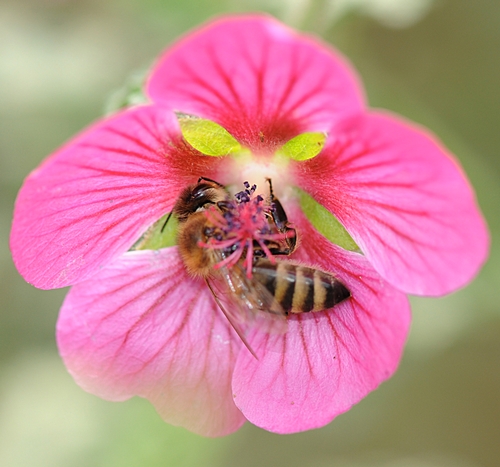One of the spectacular plants blooming in the Häagen-Dazs Honey Bee Haven, the half-acre bee friendly garden at the University of California, Davis, is the cape mallow (Anisodontea hypomandarum), a native of South Africa.
The paperylike pink blossoms attract a good number of bees--no, a great number of bees. That's because of two reasons: (1) the haven is located right next to the Harry H. Laidlaw Jr. Honey Bee Research Facility on Bee Biology Road and its 60 colonies, and (2) bees love--absolutely love--cape mallow.
The haven is designed to serve several purposes: to be a year-around food source for the Laidlaw bees and other pollinators; to raise public awareness about the plight of honey bees; to provide an educational experience for visitors who can learn what to plant in their own gardens; and to serve as a research garden.
Special attractions at the haven--it's open year-around and admission is free--are the six-foot-long ceramic bee sculpture, the work of Davis artist Donna Billick; the two bee hive columns that grace the entrance to the garden, and the ceramic bench tiles showcasing bees and flowers. The bee hive columns and tiles are the work of the UC Davis Art/Science Fusion Program, founded and directed by Billick and UC Davis entomologist Diane Ullman.
If you go--and you should--check out the cape mallow. The flowers are so drop-dead gorgeous that surely they must be replicated somewhere on an an exotic silk dress or shirt.
With honey bees foraging on them.
Attached Images:

Cape Mallow

Lovin' the Mallow

Wallowing in Mallow